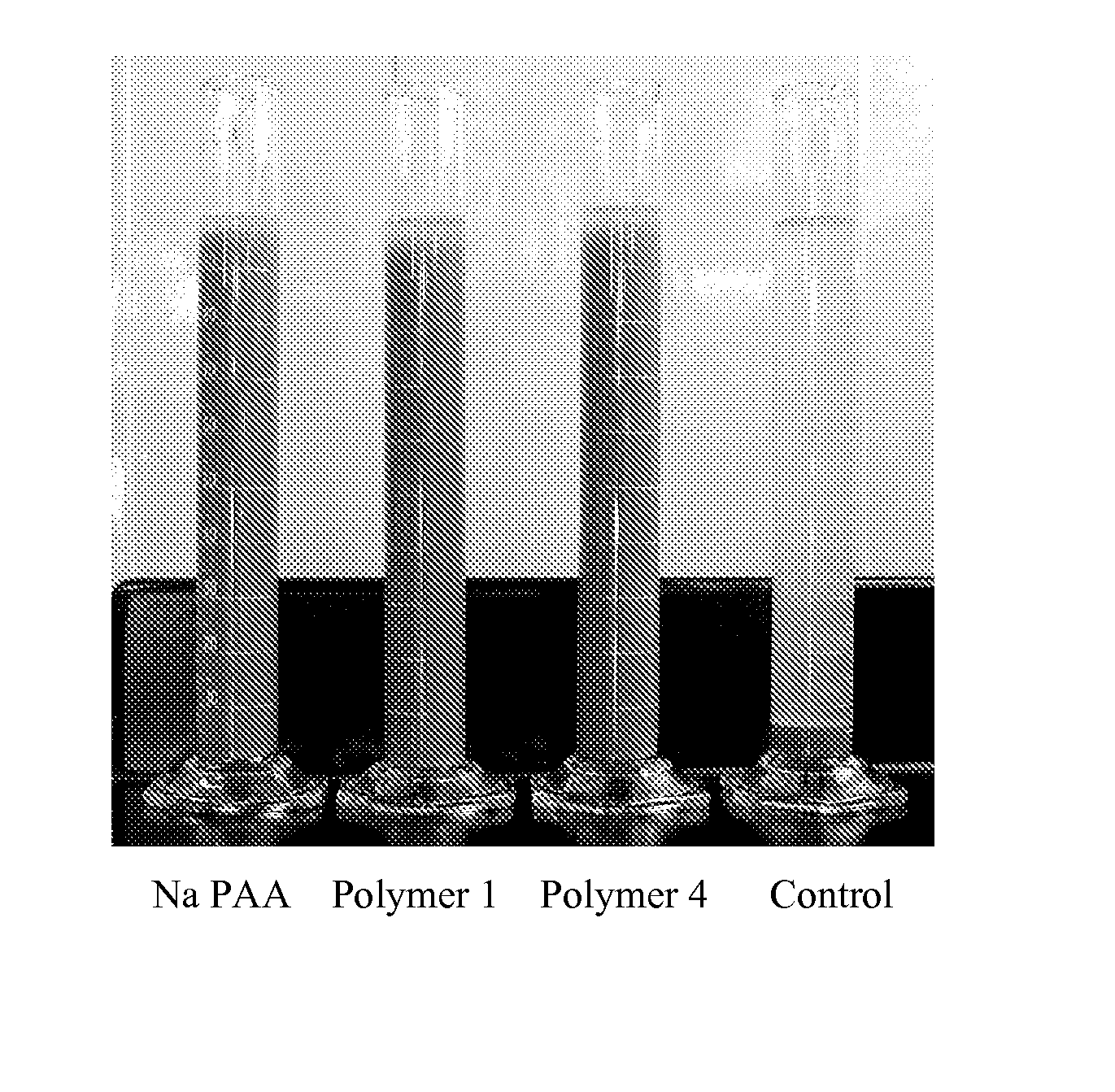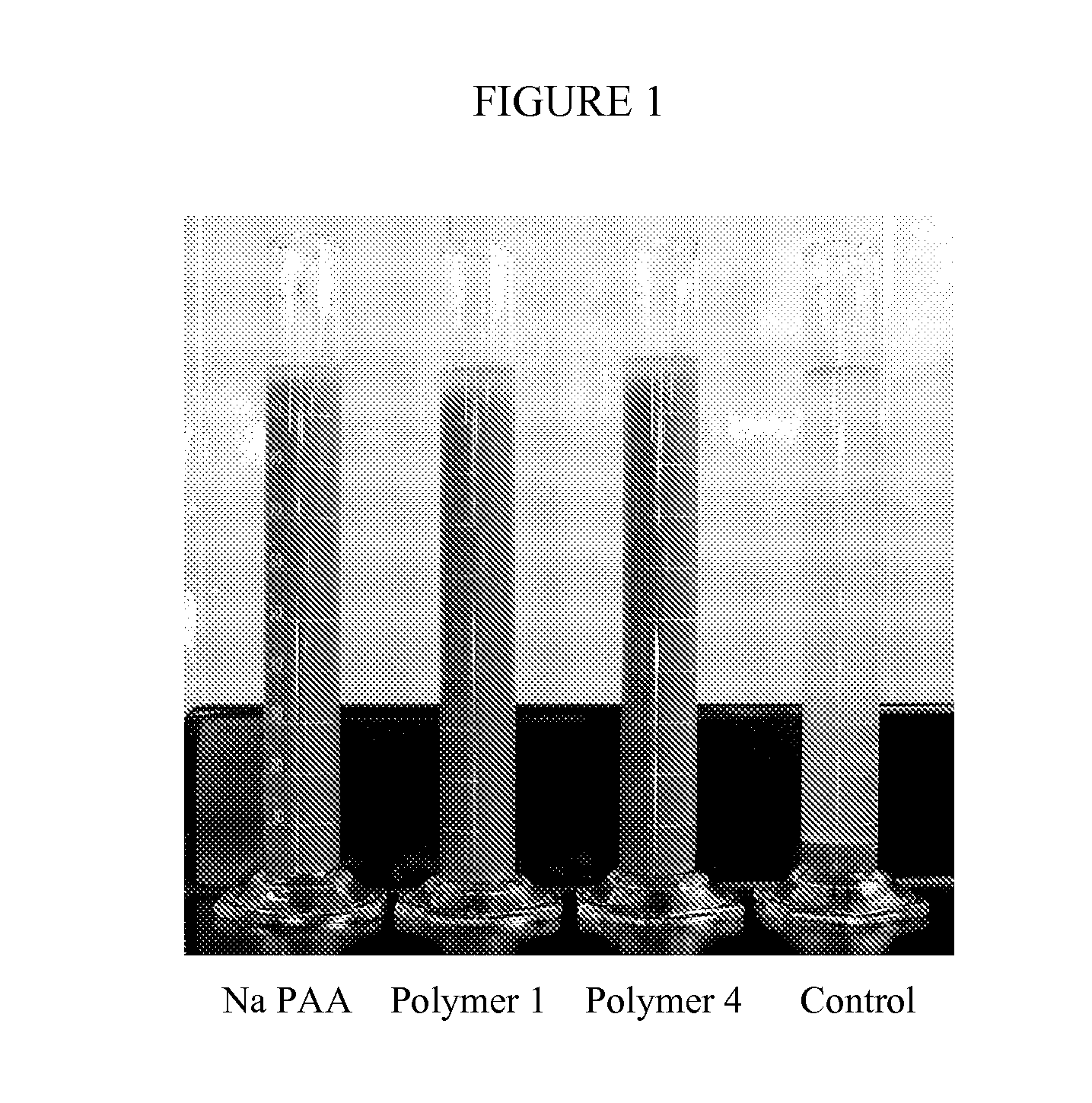Hybrid copolymers
a hybrid copolymer and copolymer technology, applied in the field of hybrid copolymers, can solve the problems of reducing the performance and life of such equipment, accumulating, deposition and fouling problems in aqueous systems, and carbon steel cooling water systems, etc., to achieve a low cost and minimize scale
- Summary
- Abstract
- Description
- Claims
- Application Information
AI Technical Summary
Benefits of technology
Problems solved by technology
Method used
Image
Examples
example 1
[0082] A reactor containing 200 grams of a 50% solution of citric acid (CA) (0.52 moles) as chain transfer agent was heated to 100° C. A monomer solution containing 238 grams of a 50% solution of sodium 2-acrylamido-2-methylpropane sulfonate (NaAMPS) (0.52 moles) was added to the reactor over a period of 1.5 hours. An initiator solution comprising 6.2 grams of sodium persulfate in 100 grams of deionized water was simultaneously added to the reactor over a period of 2 hours. The mole percent of citric acid chain transfer agent based on moles of citric acid and NaAMPS was 50%. The reaction product was held at 100° C. for an additional 2 hours. The final hybrid copolymer product was a golden yellow solution.
example 2-4
[0083] Example 1 was repeated but using lower amounts of citric acid as the chain transfer agent. The residual amount of citric acid left in solution was measured by liquid chromatography (“LC”). The amount of citric acid incorporated into the polymer was calculated by the difference of citric acid added to the initial charge and the residual amount measured by GC. The number average molecular weight (Mn) of these polymers was measured by gel permeation chromatography (“GPC”).
TABLE IVarying amount of natural constituent during polymerizationMole % CA basedWt % of citric acidon total moles ofincorporated intoExampleCA + NaAMPSthe polymerMn1506.43536230448673201.264814100.56256
The data indicates that the amount of citric acid incorporated into the copolymer increases as the mole % of CA based on total moles of CA+NaAMPS increases. Also, the molecular weight of the polymer decreases when increasing amounts of CA are added to the reaction. This lowering ...
example 5
Synthesis of Hybrid Copolymer
[0084] A reactor containing 200 grams of a 50% solution of citric acid (0.52 moles) and 212.4 grams of a 50% solution of NaOH (2.65 moles) was heated to 100° C. A monomer solution containing 100 grams of acrylic acid (1.39 moles) was added to the reactor over a period of 1.5 hours. An initiator solution comprising of 6.6 grams of sodium persulfate in 30 grams of deionized water was simultaneously added to the reactor over a period of 2 hours. The reaction product was held at 100° C. for an additional period of 2 hours. The final product was a water white solution.
PUM
| Property | Measurement | Unit |
|---|---|---|
| temperatures | aaaaa | aaaaa |
| temperatures | aaaaa | aaaaa |
| temperatures | aaaaa | aaaaa |
Abstract
Description
Claims
Application Information
 Login to View More
Login to View More - R&D
- Intellectual Property
- Life Sciences
- Materials
- Tech Scout
- Unparalleled Data Quality
- Higher Quality Content
- 60% Fewer Hallucinations
Browse by: Latest US Patents, China's latest patents, Technical Efficacy Thesaurus, Application Domain, Technology Topic, Popular Technical Reports.
© 2025 PatSnap. All rights reserved.Legal|Privacy policy|Modern Slavery Act Transparency Statement|Sitemap|About US| Contact US: help@patsnap.com


